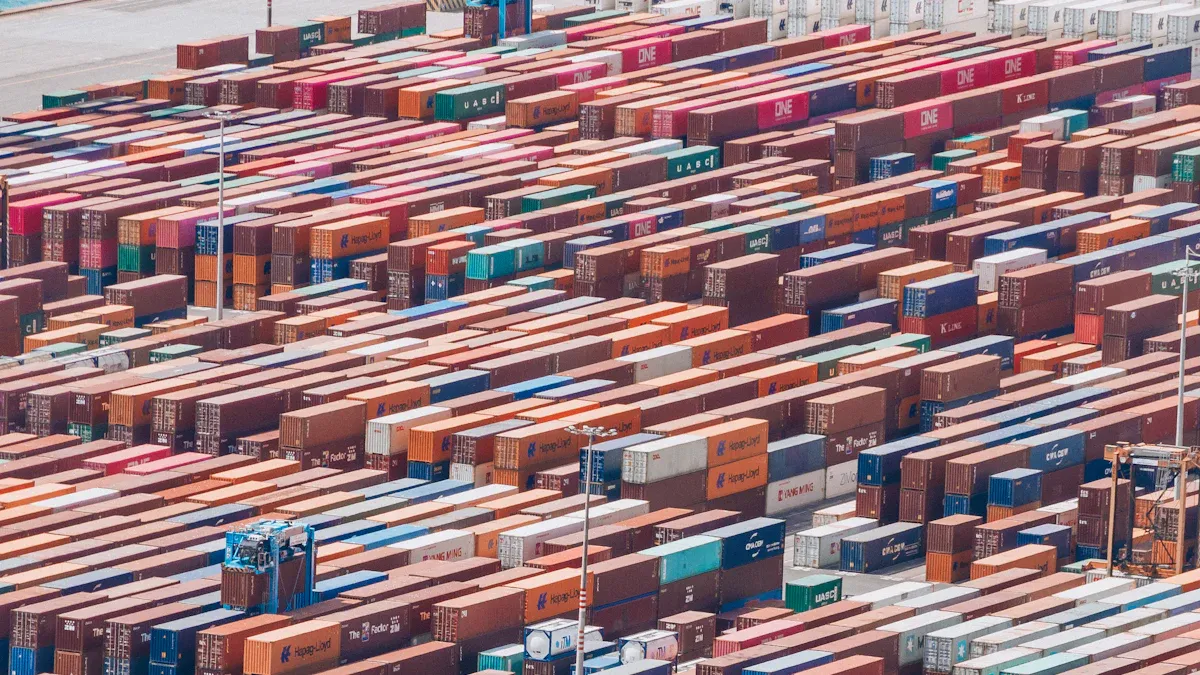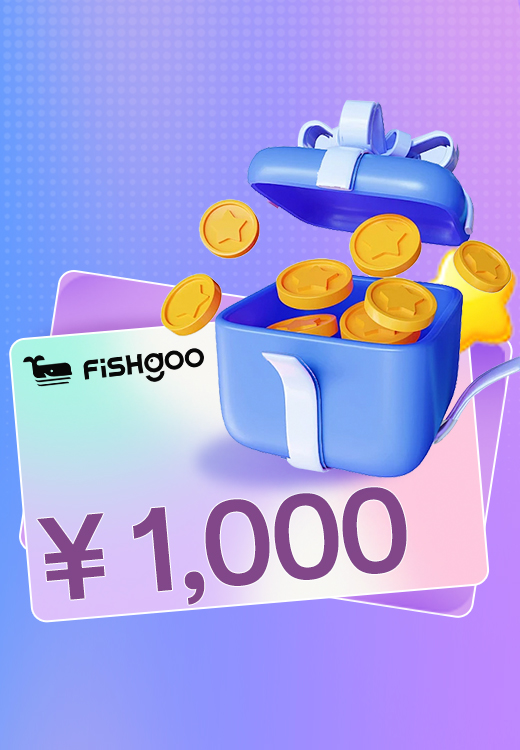Local Retailer's Edge: Accessing High-Quality Wholesale Inventory from China

You want your store to be special in a crowded market. Getting high-quality wholesale inventory from China helps you a lot. Today, platforms like Fishgoo make this much simpler. Many local retailers now use digital procurement solutions to buy and sell faster.
These tools do many steps for you, so you get quicker and better results.
Some businesses have made their cycle times shorter by up to 30%.
Real-time tracking lets you find problems early and keep things working well.
Using these systems gives you the Local Retailer's Edge. You can help your customers more and grow your business faster.
Key Takeaways
Get high-quality wholesale inventory from China to stand out. Use platforms like Fishgoo to make buying easier.
Talk directly with manufacturers to save money and get better products. This helps you meet customer needs fast.
Solve sourcing problems by checking suppliers and talking clearly. This lowers risks and helps build trust.
Watch market trends to pick the best products. Use tools and reports to keep your inventory what customers want.
Make good relationships with suppliers for better prices and faster shipping. Trust and clear talks help everyone succeed.
Local Retailer's Edge in Sourcing from China
Unlocking Competitive Advantages
You can get ahead in your market by buying straight from China. This way, you get many good things:
You talk to manufacturers and skip middlemen. This helps you save money.
China has fast shipping systems. You get products quickly and help customers faster.
The supply chain in China is strong. You have fewer problems when you work with trusted partners.
Quality control in China keeps products the same and steady.
Many suppliers and skilled workers are close together. This makes making products easier.
These benefits give you the Local Retailer's Edge. You can sell at better prices, keep your store full, and follow new trends before others.
Overcoming Common Sourcing Barriers
Buying from China gives you many chances, but there are some problems. Here are the main barriers and what they mean:
Barrier Type | Description |
|---|---|
Some suppliers do not speak English well. This makes talking harder. | |
Cultural Communication | People talk in different ways. This can cause confusion. |
Time Zone Challenges | China is far away. The time difference makes quick talks tough. |
Quality Control Failures | Most problems happen when importers do not check quality well. |
Payment and Financial Traps | New businesses can lose money if they pay untrusted suppliers. |
Customs Complications | Problems often come from missing papers or not following rules. |
You can solve these problems with smart solutions:
Solution Type | Description |
|---|---|
Look up suppliers to find good partners. | |
Clear Communication | Make sure you share your needs and wants clearly. |
Quality Control Measures | Check product quality during making and before shipping. |
Supply Chain Logistics Optimization | Work with shipping experts to move and store products well. |
Embrace Technology and Automation | Use online tools and machines to make buying easier and faster. |
If you use these steps, you can fix problems and keep your Local Retailer's Edge.
Benefits and Risks of Wholesale Sourcing
Key Benefits for Local Retailers
When you buy wholesale inventory from China, your business gets many good things. You can pick how much you want to order. This helps you control your money and storage space. You also talk right to the manufacturers. This lets you tell them what you need and get answers fast. Talking directly helps stop mistakes and makes your orders right.
Here is a table that lists the top three benefits for local retailers:
Benefit | Description |
|---|---|
You can order big or small amounts and save on shipping and storage. | |
Consistent quality management | You get steady products because you work with manufacturers directly. |
Direct and clear communication | You can say what you need and get quick replies, so your store does better. |
These benefits help you keep your shelves full and your customers pleased. They also give you the Local Retailer's Edge in a busy market.
Managing Sourcing Risks
Buying wholesale has many good points, but you need to watch for risks. Some suppliers might send bad products or change prices after you agree. Others may trick you by sending different items than promised. Payment scams and hidden costs can also be problems.
Here is a table of common risks you might face:
Risk Type | Description |
|---|---|
Scammers might send fake bills with wrong bank info. | |
Poor Quality Goods | Suppliers could send bad products, and refunds are hard to get. |
Bait-and-Switch Tactics | You might get items that are not what you ordered. |
Employee Sub-Contracting | Money could go to the wrong factory or person. |
Unexpected Cost Increases | Prices and fees might go up after you order. |
To keep your business safe, use smart steps:
Make a clear plan for picking suppliers and products.
Check suppliers well and visit them if you can.
Ask for samples before you buy a lot.
Use tools to watch for supply chain problems.
Tip: Begin with small orders when trying new suppliers. This helps you find problems early and avoid big losses.
If you follow these steps, you can handle risks and keep your Local Retailer's Edge strong.
Finding the Right Products and Suppliers
Identifying Market Demand
You must know what your customers want first. This helps you buy the right products from China. Good market research stops you from buying too much or too little. You can use many ways to learn about your local market. Each way shows you what people like and need.
Here is a table with some top ways to find out what your customers want:
Method | Description |
|---|---|
Intercept Surveys | Ask customers questions as they leave your store. You can use tablets or phones to do this. |
Mystery Shopping | Send someone to shop at your store. They report on service and products. This helps you see what works and what does not. |
Customer Surveys | Ask your customers what they like and want in your store. |
Competitive Research | Look at other stores. See what they sell and how they get customers. |
Geofencing Surveys | Use GPS to ask people questions when they enter your store area. |
You can also use sales records, social media, and online reviews. These help you spot trends and see what is popular. If you have a small store, you may only need a few suppliers. Bigger stores often work with more suppliers or hire sourcing companies. This helps you match products to what your customers want. It also keeps your business running well.
Tip: Always check what sells well in your area before you order a lot. This helps you keep your shelves full of items your customers will buy.
Sourcing from Trusted Platforms
After you know what your customers want, you need to find the best place to buy those products. Many online platforms help you connect with suppliers in China. Each platform has good and bad points. Pick the one that fits your business needs.
Here is a table with some trusted platforms for buying wholesale products from China:
Platform | Type | MOQ | Advantages | Disadvantages |
|---|---|---|---|---|
Supplyia | Private Label Services | >$500 | Stable supply chain, product sourcing services, quality control | Only good for SMEs |
AliExpress | General B2C Product | None | Simple ordering, worldwide delivery, huge product range | Price not competitive for large wholesale orders |
Made-In-China | General Wholesale Website | Possible Low | Buyer safety, easy interface, many suppliers and products | Complicated buying, weak customer support |
Global Sources | General Wholesale Website | 500 MOQs | Trade shows, premium services, verified suppliers, easy website | Not for beginners, no direct delivery support |
DHgate | General B2C Product | No MOQ | Buyer safety, easy ordering, storage, many suppliers, beginner-friendly | Search can be hard |
HTDC | Online Wholesale Website | Low MOQ | Holistic sourcing, strong verification, many suppliers | Complex for large orders, unclear logistics |
DIYTrade | Product Directory & B2B | Inquiry | Simple experience, many products and suppliers | No direct buying, weak safety and quality control |
Trade Key | Global B2B Marketplace | Inquiry | Live buyer/seller feed, large seller base | Outdated design, weak safety |
Global Market | Bulk Wholesale Website | Inquiry | Top manufacturers, strong audits, focus on quality | Not for small orders |
Tomtop | Tech Gadgets, Toys, Living | No | Friendly for any order size, good for dropshipping | No customization |
Pinduoduo | General Products | 1 | Good for replica products | No stable stock, quality varies |
Chinavasion | General B2C Products | Varies | Great bulk pricing, variety, easy returns, own factories | Hard to find real manufacturers, small orders best |
When you pick a platform, check if the suppliers are reliable. Look at their business license and certifications. Read reviews and see what other buyers say. Always ask for product samples before you buy a lot. Talk to the supplier about prices, shipping, and product details. Use safe payment methods like PayPal or the platform’s own system to protect your money.
Note: Picking the right supplier and platform gives you the Local Retailer's Edge. You can offer better products and prices than your competitors.
Evaluating Supplier and Product Quality
Supplier Verification Steps
You must check if your supplier is honest before you buy. This helps you stay safe from scams and get the right products. Here are some easy steps to follow:
Ask for a Letter of Credit if you buy a lot. This keeps your money safe.
Use an escrow service for small orders or samples.
Go to the factory or hire someone to check it. This shows if the supplier can make your products.
Make sure the supplier uses a business bank account.
Check the supplier’s address and see if the company is still open.
Look at audit reports and credit ratings to see if the company has enough money.
Ask for reports about how much they can make and visit if you can.
Read customer reviews and see how they worked with others.
You can also use third-party services to help you check suppliers. Here are two good choices:
Service Name | Description | Key Features |
|---|---|---|
Chinaimportal | Checks suppliers and their backgrounds in China. | Looks at business licenses, test reports, and certifications. |
Gives fast reports to check companies. | Confirms legal registration and works quickly. |
Tip: Talk to other buyers who used the supplier. Their stories can help you know if the supplier is good.
Quality Control and Inspection
You want your products to be good every time. Quality control starts before making products and goes until you get them. Here are the best steps to follow:
Check suppliers by looking at their certificates and audits.
Plan ahead by setting clear product rules and checking samples.
Look at products while they are being made to find problems early.
Check the final batch before shipping so there are no surprises.
Use tests to check how products work and if they are safe.
Using third-party quality control (QC) services is a strong way to check products. These groups do careful checks, audits, and tests. They act as your helpers at the factory.
If you see bad reviews or problems with quality, check more often. Tell your suppliers what QC steps you want. This helps you stop problems and keeps your customers happy.
Streamlining Orders and Communication
Effective Communication with Suppliers
You need good communication to work with Chinese suppliers. Trust helps you get better deals. Try to make friends before talking about business. Saying something about local holidays shows you care. This helps you connect with your supplier.
Meeting face-to-face is important in China. You can see how your supplier acts in person. This helps you know what they really think. Talking in person can show things that emails miss.
Use easy words when you talk. Most suppliers do not speak English well. Pictures and diagrams help them understand you better. Always respect your supplier’s role. Do not say bad things about them in public. This keeps trust strong and helps you work together.
Here are some ways to talk well with suppliers:
Know about local holidays and customs.
Take your time when you make deals.
Meet in person if you can.
Use simple words and pictures.
Respect your supplier’s position.
Ask local experts for help.
Tip: Talking clearly helps you avoid mistakes and keeps your orders safe.
Requesting Samples and Clarifications
Always ask for samples before you buy a lot. Samples help you check if the product is good. Suppliers might ask you to pay for samples and shipping. Make sure you plan for these costs.
Here are steps to ask for and check samples:
Look at the sample and test how it works.
Tell the supplier what you think and ask for changes.
Set a date for when you want the sample. When you get it, check how it looks and works. Share your ideas with the supplier. If you like the sample, write down all details before you order more.
Pick a date for getting the sample.
Give feedback and ideas to make it better.
Note: Checking samples carefully helps your business and makes sure you get what your customers want.
Navigating Sourcing Platforms and Agents
Using One-Stop Services for Efficiency
You can make buying products easier with one-stop platforms like Fishgoo. These services help you with every step, from picking products to getting them to your store. Fishgoo is like a helper. It handles payment, checks quality, and ships your items. You just paste a product link, and the platform does the rest for you.
Here is a table that shows how one-stop services help you work faster:
Feature | Benefit |
|---|---|
Bulk Order Management | Finds discounts and suppliers with enough products. |
Procurement Tracking | Shows your order status and delivery in one spot. |
Consolidated Shipping Options | Picks the best shipping for your order and where you are. |
Real-time Updates | Tells you about customs, duties, and when your order will arrive. |
Platforms like Fishgoo also give you safe ways to pay and check product quality. You can put many orders together in one shipment. This saves you money and time. These tools help your business run well and give you the Local Retailer's Edge.
Exploring Online and Offline Channels
There are two main ways to buy products: online and offline. Online platforms let you see lots of products in one place. You get buyer protection, less chance of scams, and easy ways to talk to sellers. Most people think online buying is simple and safe. But you might not see the product until it gets to you, and it can be hard to ask for changes.
Offline buying lets you check products yourself. You can meet suppliers and talk face-to-face. This helps you know the seller better, but you might have trouble with language or feel lost in busy markets.
Many store owners use both ways. For example:
Look up products online, then meet the supplier to get a better deal.
Work with sourcing agents who know both online and offline markets.
Start with small online orders, then buy more offline if you like what you get.
Online sales in China keep getting bigger. In 2022, more than half of all retail sales were online. This means online buying is now very popular for many businesses.
Tip: Try both online and offline ways to see which is best for your store.
Shipping, Customs, and Logistics

Shipping Options and Cost Management
You need to pick the best way to ship your products. Many stores use fulfillment services like NextSmartShip. This company gives you free storage, order help, and shipping. These services help you save money and make orders easier to handle.
Shipping costs change for many reasons. You should know these things:
Distance and Route: Longer trips cost more because they use more fuel and time.
Shipping Method: Air freight is fast but costs more than ocean freight.
Weight and Volume: Heavy or big shipments cost more. Carriers use actual or volumetric weight.
Freight Class and Packaging: Higher classes mean higher prices. Good packaging stops damage and extra fees.
Customs Duties and Taxes: These charges depend on how much your goods are worth.
Documentation and Compliance: Mistakes in paperwork can slow things down and cost more.
Seasonal Demand and Peak Periods: Prices go up when lots of people ship and space is tight.
Tip: You can save money by putting packages together and picking slower shipping for items that are not urgent.
Customs, Taxes, and Documentation
You need the right papers when you bring products from China. Customs workers check these papers before your goods can enter. Here is a table with common documents you need:
Document Type | Description |
|---|---|
Bill of Lading | Carrier’s receipt for cargo shipment. |
Invoice | Statement of goods sold, prices, and terms. |
Shipping List | List of items shipped, used for customs clearance. |
Customs Declaration | Form detailing the nature and value of imported goods. |
Insurance Policy | Coverage for loss or damage during transit. |
Sales Contract | Agreement between buyer and seller. |
Import Quota Certificate | Limits quantity for certain commodities. |
Import License | Permit for importing specific goods. |
Inspection Certificate | Proof that goods meet standards. |
Safety or Quality Licenses | Certifications for safety and quality. |
Registration Requirements | Needed for products like grains, oilseeds, and seafood. |
You also need to know about taxes. Here is a table with common taxes:
Tax Type | Description |
|---|---|
Value-added tax (VAT) | Tax on the value added at each stage of production or distribution. |
Consumption tax (CT) | Tax on certain goods, often luxury items. |
Customs duties | Taxes on imports and exports, affecting total sourcing costs. |
A new 10% import tax can make your costs go up. This change affects how you price your products and how much you earn. Many stores use customs brokers because the rules are hard to understand. You must learn about enterprise income tax and other taxes in China. These rules can change your costs and how you set prices.
Note: Careful planning and correct paperwork help you avoid delays and extra charges. Always check the newest rules before you import.
Adapting to Trends and Building Relationships
Staying Ahead of Market Trends
You must know what is popular in stores. This helps you pick products your customers want. Many platforms show what is new and trending in China.
Platform | Description |
|---|---|
Alibaba | Big B2B marketplace with lots of products and suppliers. |
Made in China | Has many industrial items, like machines and hardware. |
Global Sources | Good for gifts and electronics, different from Alibaba. |
JingSourcing | Finds factories and helps small businesses with sourcing. |
DHgate | Offers many products for sourcing. |
1688 | Chinese version of Alibaba, mostly for local buyers. |
Yiwugo | Focuses on Yiwu market, known for small goods. |
AliExpress | Retail site for small orders, good for testing products. |
You can use other ways to find trends too. JingSourcing shares monthly reports about popular products. Xiamen International Wholesale Exchange is a new place to find good products.
JingSourcing gives reports every month about what is popular.
Xiamen International Wholesale Exchange helps you find quality products.
Tip: Look at these sources often to see what is new. This helps you keep your store up-to-date and ahead of others.
Long-Term Supplier Partnerships
Having strong partnerships with suppliers helps you a lot. You get better prices, faster shipping, and good products. Here are steps to build these relationships:
Build trust by working closely with your supplier.
Learn about cultural differences, like "face" and guanxi.
Talk clearly and listen well to avoid mistakes.
Check product quality often with inspections and tests.
Make deals that help both you and your supplier.
Write a contract that protects everyone and covers key points.
When you do these things, you see good changes.
Benefit | Description |
|---|---|
Your business runs smoother and faster. | |
Reduced Stock Delivery | Products come quicker, so you do not run out. |
Better Communication | You can talk about prices and deals more easily. |
Commitment to Quality | Suppliers work hard to keep quality high for trusted partners. |
Note: Good supplier relationships help your store grow and keep customers happy. You build a team that helps you succeed.
You can get the Local Retailer's Edge by buying good wholesale inventory from China. This way, you pay less, have more products to pick from, and restock your store faster. To begin, try these steps:
Look for suppliers on trusted B2B platforms and go to trade shows.
Always check if suppliers have real licenses, ask for samples, and visit their factories if you can.
Give clear product details and talk about fair deals.
Pick safe ways to pay, like paying some money first.
Make your own quality checks and look at products while they are being made.
Doing these things helps you avoid problems and make strong ties with suppliers. Smarter buying helps your store be different and grow.
FAQ
How do you start sourcing products from China?
First, find out what your customers want to buy. Use trusted platforms like Fishgoo to help you. Copy and paste product links to see choices. Look at the options and pick what you need. Always read reviews about the supplier before you buy. Ask for samples to check the product before you order a lot.
What payment methods can you use on Fishgoo?
Fishgoo lets you pay with PayPal, Visa, and MasterCard. You can also use many local payment ways. If you have an Alipay account, you can use that too. These choices make paying safe and simple.
How does Fishgoo help with quality control?
Fishgoo gives you free QC photos when your product gets to the warehouse. You can ask for more photos or special checks if you want. This helps you make sure your product is good before it ships.
What should you do if your parcel gets delayed in customs?
If your parcel is stuck, contact Fishgoo support and give them your parcel number. They will help you find out what is happening and give you advice. Always check your documents are complete so you do not have delays.
See Also
Navigating Weidian: Tips for Safe International Purchases
Fishgoo: Reliable Shopping Assistance for Chinese Goods
How to Purchase Unique Designer Brands via Weidian
Simplified Shopping Experience: Your All-in-One China Platform


